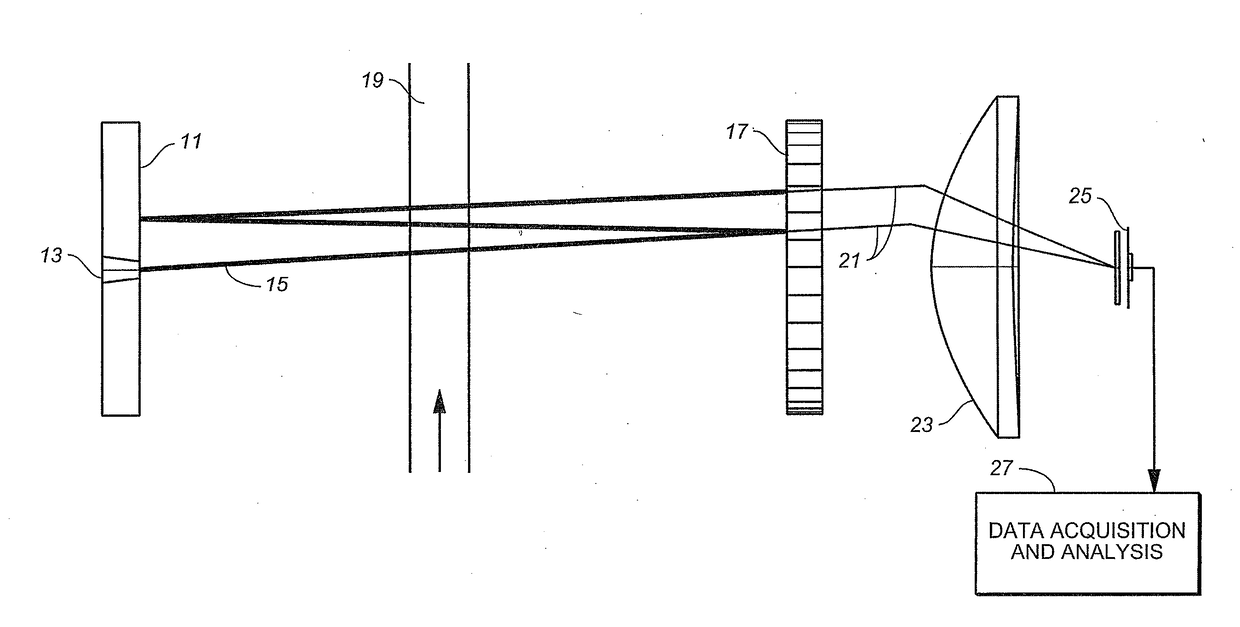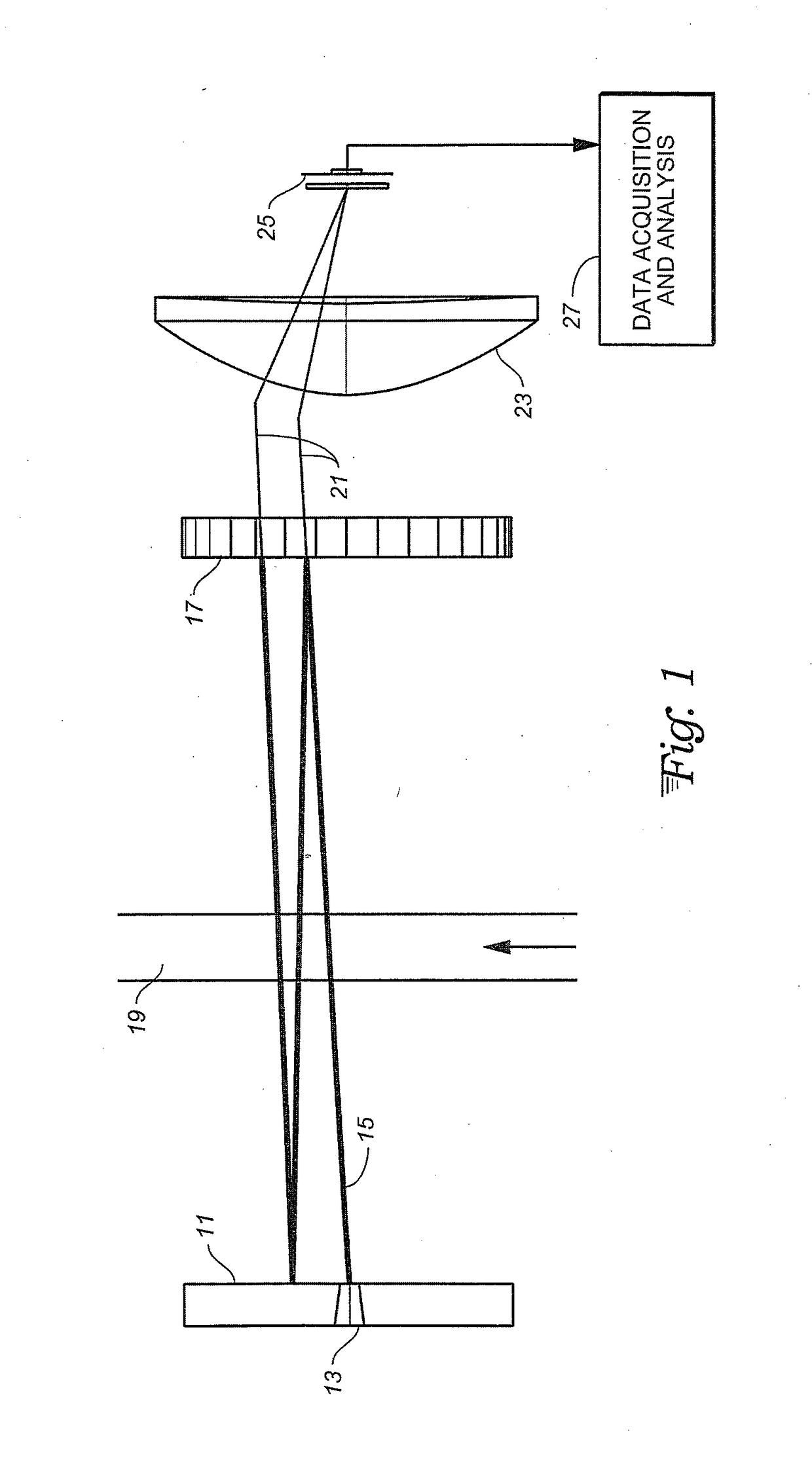Method of increasing power within an optical cavity with long path lengths
a technology of optical cavity and path length, applied in the field of cavity-enhanced absorption spectroscopy instruments, can solve the problems of reducing the utility of icos instruments, increasing the cost, and limiting the sensitivity of instruments, so as to increase the power injected into the cavity, the effect of long path length and high nois
- Summary
- Abstract
- Description
- Claims
- Application Information
AI Technical Summary
Benefits of technology
Problems solved by technology
Method used
Image
Examples
Embodiment Construction
[0020]With reference to FIG. 1, our invention utilizes an astigmatic cavity configuration similar to an astigmatic Herriott cell to prevent the beam from exiting the cavity after a few reflections. A first mirror 11 has an injection hole 13 so that the mirror 11 serves as an injection mirror for the optical cavity. A light source (not shown) is located outside of the cavity and provides a light beam 15 that is directed through the injection hole 13 into the cavity. A second mirror 17 spaced apart from the injection mirror 11 is partially transmissive of the light beam 15. The light beam 15 makes multiple round trips within the cavity and passes through a sample volume 19 some minimum number of times so as to be subject to absorption by any gaseous or vapor sample within the sample volume 19. Light 21 transmitted partially through the mirror 17 is collected, for example by a lens 23, so as to impinge upon and be detected by a detector 25.
[0021]The signal output from detector 25 is co...
PUM
| Property | Measurement | Unit |
|---|---|---|
| reflectivity | aaaaa | aaaaa |
| reflectivity | aaaaa | aaaaa |
| tilt angle | aaaaa | aaaaa |
Abstract
Description
Claims
Application Information
 Login to View More
Login to View More - R&D
- Intellectual Property
- Life Sciences
- Materials
- Tech Scout
- Unparalleled Data Quality
- Higher Quality Content
- 60% Fewer Hallucinations
Browse by: Latest US Patents, China's latest patents, Technical Efficacy Thesaurus, Application Domain, Technology Topic, Popular Technical Reports.
© 2025 PatSnap. All rights reserved.Legal|Privacy policy|Modern Slavery Act Transparency Statement|Sitemap|About US| Contact US: help@patsnap.com



